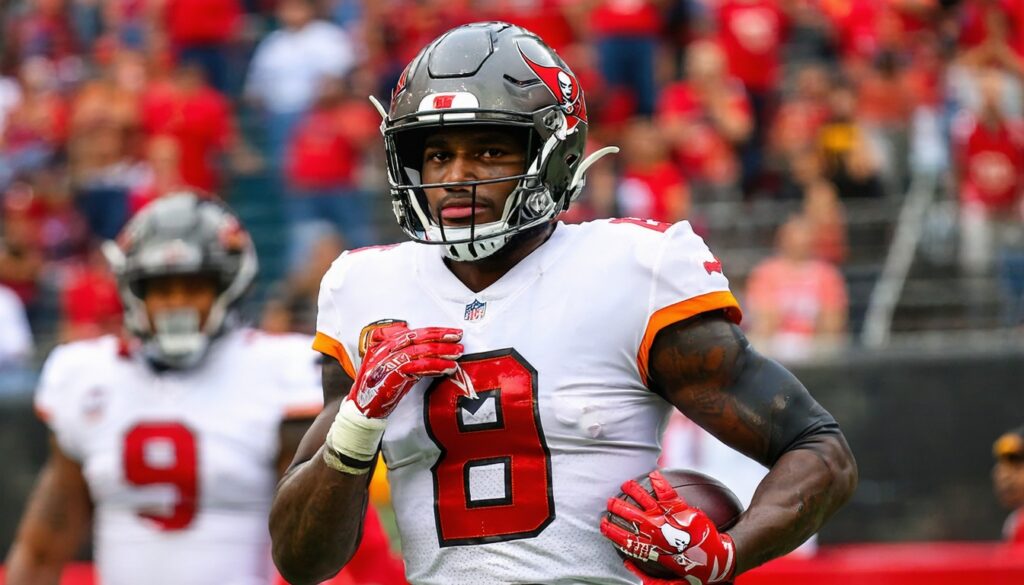The NFL delivers a fresh storyline with every week, but matchups like Commanders vs Buccaneers tend to draw unique intrigue. Each franchise, with its own legacy and evolving roster, brings anticipation for gridiron fans and analysts. Whether driven by postseason implications, upstart quarterbacks, or contrasting coaching philosophies, clashes between Washington and Tampa Bay frequently provide a barometer for the direction of both teams’ seasons. This in-depth analysis contextualizes the latest showdown, unpacks pivotal stats, and highlights the players and strategies most likely to decide the game.
Season Overview: Contrasting Journeys and Storylines
Entering this meeting, both the Washington Commanders and Tampa Bay Buccaneers find themselves navigating significant transitions. For Washington, change remains constant—be it a rebranded franchise identity or shifting personnel at key positions. Quarterback play, offensive line chemistry, and red-zone execution have topped the agenda as they look to establish a clear offensive identity under new leadership.
Tampa Bay, once steered by the Hall of Fame-caliber presence of Tom Brady, is forging a new era. Baker Mayfield’s arrival under center has sparked speculation and cautious optimism, as the Bucs balance their core of defensive playmakers with evolving offensive weapons like Mike Evans and Chris Godwin. The coaching staff, led by Todd Bowles, leans heavily on strategic flexibility, known for recalibrating its approach based on the week’s opponent.
“When teams are in transition—whether it be at quarterback, coaching staff, or organizational philosophy—the margins in any given NFL matchup shrink considerably,” observes veteran NFL analyst Brian Baldinger. “In games like Commanders vs Buccaneers, efficiency and discipline often separate contenders from those still building.”
Statistical Comparison: Offense, Defense, and Recent Performance
Evaluating raw numbers provides only part of the narrative, yet certain metrics shed light on performance trends and game-defining tendencies.
Offensive Metrics: Big Plays vs Consistency
Washington’s offensive output in recent weeks has tilted toward an aggressive passing approach, with sporadic but explosive deep-ball connections. Sam Howell’s willingness to attack downfield has led to both memorable highlights and costly turnovers. The running game, while showing flashes, often struggles to sustain drives against physical defensive fronts.
Tampa Bay, meanwhile, has emphasized shorter, higher-percentage throws to move the chains, relying on Mayfield’s ability to evade pressure and distribute the ball quickly. Play-action and screen passes have been essential, particularly when facing stout defensive lines.
Key Offensive Trends:
– Washington ranks in the league’s middle tier for total yards but has a top-10 passing play frequency.
– Tampa Bay’s third-down conversion rate lags behind league averages, underscoring challenges in finishing drives.

Defensive Trends: Pressure and Turnover Battles
Both teams have invested significantly on the defensive side of the ball—through both the draft and free agency.
Washington’s formidable defensive line, led by the likes of Jonathan Allen, continues to pressure opposing QBs, though inconsistency on the back end has resulted in big plays allowed. The Commanders’ ability to generate sacks but sometimes yield chunk gains is emblematic of a unit searching for balance.
Tampa Bay’s defense is anchored by veteran leadership, with Lavonte David and Antoine Winfield Jr. proving pivotal in run support and pass coverage. The Bucs excel at forcing turnovers, ranking among the league’s best in takeaways, which has often compensated for their vulnerability to prolific passing attacks.
Recent Defensive Highlights:
– The Commanders maintain a pass rush inside the NFL’s top 10 for total sack rate.
– The Buccaneers have forced multiple turnovers in several games, boosting their win probability in close contests.
Key Matchups That Could Swing the Game
Quarterbacks Under Pressure
The battle between Howell and Mayfield features two signal-callers at different crossroads: one developing, one revitalizing his career. Both must navigate defensive schemes tailored to disrupt timing and capitalize on mistakes.
- Howell’s mobility will be tested by the Bucs’ aggressive blitz packages.
- Mayfield’s ball security and decision-making are under the microscope against a Commanders’ front that brings pressure from multiple angles.
Skill Position Showdowns: Wideouts and Defensive Backs
Tampering with the rhythm of Washington’s dynamic receivers—Terry McLaurin and Jahan Dotson—will be a priority for Tampa’s secondary, which occasionally struggles with vertical threats. Conversely, Mike Evans’ matchup against Washington’s cornerbacks could provide a size and experience advantage for the Bucs, especially in red-zone scenarios.
In the Trenches: Offensive Line vs Defensive Fronts
No storyline in this matchup is more critical than line play. Both teams rely on dominating the line of scrimmage:
- The Commanders’ offensive line must protect Howell against complex Tampa blitzes known for disguising pressure.
- Tampa Bay’s recent struggles in run blocking have put more onus on Mayfield’s improvisational skills to extend drives.
Coaching Philosophies and In-Game Adjustments
Great matchups are often decided on the sidelines as much as on the field. Both coaching staffs have demonstrated the ability to make halftime or in-game changes—sometimes altering momentum entirely.
Ron Rivera, Washington’s head coach, is lauded for defensive discipline but is under growing scrutiny to spark offensive consistency. On the other hand, Todd Bowles’ Bucs are recognized for adaptability, especially in defensive play-calling that veers between conservative coverage and high-pressure blitzes.
In a league where chess matches frequently occur beneath the surface, these philosophies will shape not only play selection but critical fourth-down decisions and two-minute drills.
Historical Context: Recent Encounters and Evolving Narratives
While every season brings roster overhauls and scheme tweaks, recent history between the Commanders and Buccaneers has produced tightly contested battles. Notably, Washington delivered a significant playoff upset at the end of the 2020 season, foreshadowing the franchise’s appetite for gritty performances in high-pressure moments.
Each new encounter reopens old wounds and opportunities:
- Tampa Bay’s Super Bowl run in 2020 featured a playoff victory over Washington, but not without significant resistance.
- Both teams have since reshaped their rosters, injecting fresh faces into storied rivalries.
Factors Most Likely to Decide the Outcome
Beyond statistics and strategy, intangible elements often define outcomes in the NFL. Momentum swings, special teams execution, and coaching flexibility will all influence this matchup.
Three X-Factors to Watch
- Turnover Margin: With both teams prone to exploiting mistakes, the side that protects the football will dramatically increase its chances of victory.
- Red Zone Efficiency: Scoring touchdowns instead of settling for field goals is essential, especially against teams capable of mounting late comebacks.
- In-Game Health and Depth: No matchup assessment is complete without factoring in emerging injuries or lack of positional depth—a single absence on the offensive or defensive front could ripple through the entire game plan.
Conclusion
The Commanders vs Buccaneers rivalry spotlights the evolving nature of the NFL: organizations rebuilding in the post-superstar era, defenses redefining the modern playbook, and quarterbacks answering the call under the brightest lights. While statistics and film study offer clues, the unpredictable drama of live competition remains the final arbiter. For fans and analysts alike, this clash offers a compelling canvas of tactics, toughness, and the quest for momentum.
FAQs
Q1: When did the Commanders and Buccaneers last meet and what was the outcome?
The teams have faced each other in both regular season and postseason play, with their most memorable recent matchup being the 2020 NFC Wild Card game, where Tampa Bay narrowly defeated Washington.
Q2: Which players are considered the top X-factors in this matchup?
Quarterbacks Sam Howell and Baker Mayfield are pivotal, but defensive playmakers such as Jonathan Allen and Antoine Winfield Jr. could also determine the game’s tempo with sacks or turnovers.
Q3: What are the most notable strengths of each team?
Washington’s defensive front is known for applying quarterback pressure, while Tampa Bay’s experienced secondary and opportunistic defense frequently generate key turnovers.
Q4: How do coaching strategies differ between the two teams?
Washington tends to focus on defensive fundamentals and ball control, whereas Tampa Bay’s coaching staff often emphasizes defensive flexibility and leveraging turnovers to gain field position advantage.
Q5: What are some keys to victory for each team?
Ball security, efficient red-zone offense, and adjusting to in-game momentum shifts are crucial. Both teams must also minimize penalties and maximize special teams opportunities to improve their winning chances.


